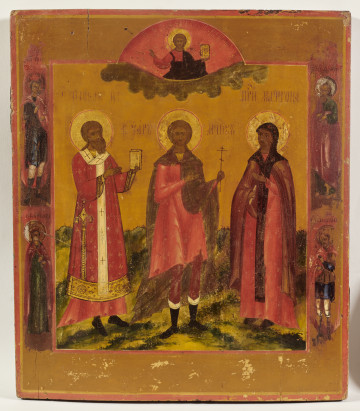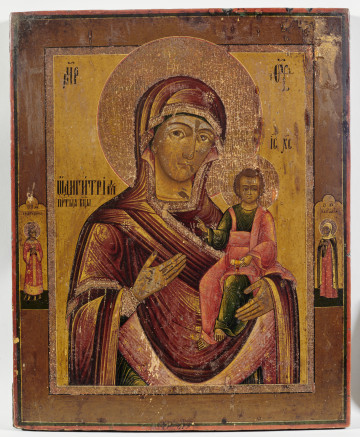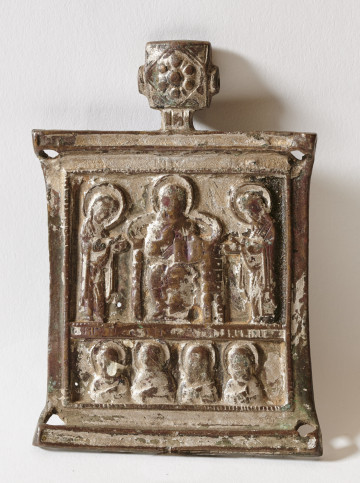
Council of Saints
koniec XIX w.
Castle Museum in Łańcut
Part of the collection: Meble i wyposażenie wnętrz
The products of André-Charles Boulle, his sons (Jean-Philippe, Pierre-Benoît, André-Charles II, Charles-Joseph), and later followers were a unique phenomenon in European furniture making between the 17th and 19th centuries. The French ébéniste had been employed by Louis XIV since 1672. The artist elevated the marquetry technique to the highest level of craftsmanship. This technique involves the use of materials other than wood in furniture facing: mother-of-pearl, tortoiseshell, brass, and tin, among others. Using a fretsaw, he cut ornaments into adjacent plates of brass sheet and tortoiseshell to obtain two opposing richly decorated patterns. He used this technique to create pairs of furniture with visually identical planar ornaments made of contrasting materials. Made with a jeweller's precision and decorated with fanciful grotesque, the valuable furniture facing became clearly recognisable, despite the artist not signing his works. The fashion for 'Boulle's style' returned in the 19th century, during the time of Napoleon III, when Baroque art was imitated. During the Second French Empire, French cabinet-makers reproduced the marquetry technique using an expanded and improved technical background and imitated or copied Boulle's products in luxurious furniture nearly overloaded with ornamentation. The displayed pair of cabinets with mirrored 'première partie' and 'contre partie' ornamentation is signed by Hippolyte Edme Pretot (1812-1855) and was most likely made in 1844. The Parisian ébéniste, imitating the "Boulle style", often used ebonized, that is, black-stained cheaper wood from non-ebony species. The marquetry used on the surface of the doors is distinguished by the glint of brass and the red-tinted tortoiseshell. In the Łańcut castle guide published in 1933, Józef Piotrowski called the cabinets described here 'newer Boulle'. Teresa Bagińska-Żurawska https://orcid.org/0000-0002-9243-3967
Object type
Furniture and interior fittings
Owner
Castle Museum in Łańcut
Identification number
Location / status

koniec XIX w.
Castle Museum in Łańcut

połowa XIX wieku
Castle Museum in Łańcut

XIX century
Castle Museum in Łańcut
DISCOVER this TOPIC
National Museum in Lublin
DISCOVER this PATH
Educational path